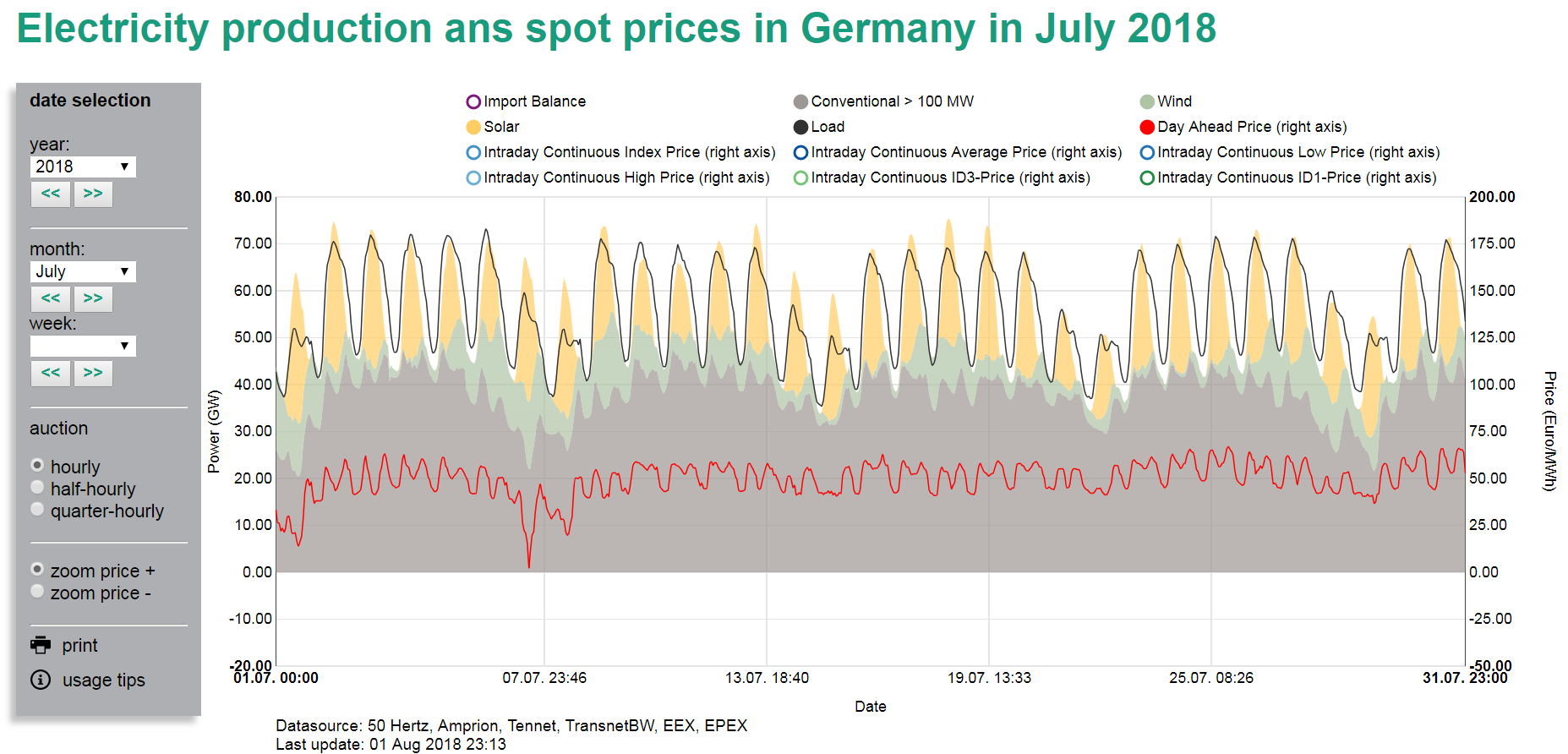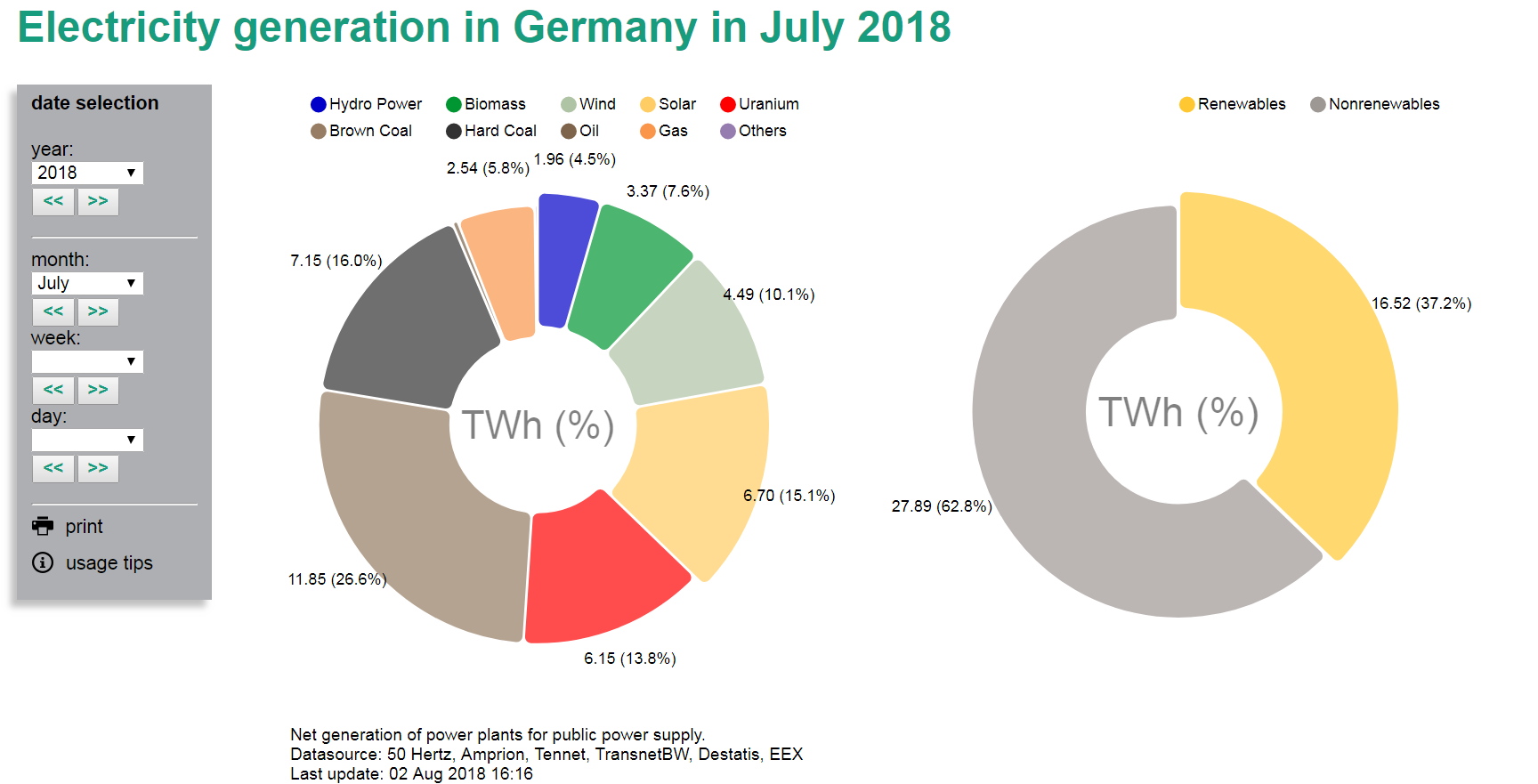High Solar Power Production Ensures Stable Electricity Supply
Researchers at the Fraunhofer Institute for Solar Energy Systems ISE reported that solar power production in Germany reached an all-time record of 6.7 TWh in July 2018. The installed photovoltaic capacity in Germany generated 15.1 % of the total electricity production in July, ahead of nuclear power (13.8 %). During the present heat wave, nuclear and coal plants are operating at reduced capacity in order to limit the amount of cooling water flowing into surrounding rivers and thus rising water temperatures. In this case, photovoltaic power fulfills an important grid-stabilizing function.


“Photovoltaic power plants don’t require cooling and don’t mind the high temperatures that we are presently experiencing. Photovoltaics has become an indispensable source of electricity, without which, grid stabilization would be difficult to maintain,” explains Prof. Bruno Burger, who is responsible for the energy data platform “Energy Charts” of Fraunhofer ISE.
A big advantage of photovoltaics is that the production corresponds well to the currently high energy demand during midday. When air-conditioning and cooling systems run at full capacity, solar PV production is also at a peak feeding anywhere from 25 to 30 GW into the grid. During midday, PV is the biggest power producer and contributes between 30% to 40% to the total electricity production.
Millions of decentralized small PV systems supply power locally to nearby consumers. This reduces transmission losses and increases the reliability of the power supply. Due to the large feed-in during peak load times, solar PV systems even reduce the electricity prices on the European Energy Exchange EEX.
In July 2018, renewables contributed to 37.3 % of the total electricity production in Germany. This value was below the peak share of 49 % occurring in May 2018, due to the large amount of electricity produced by wind.
Last modified:
